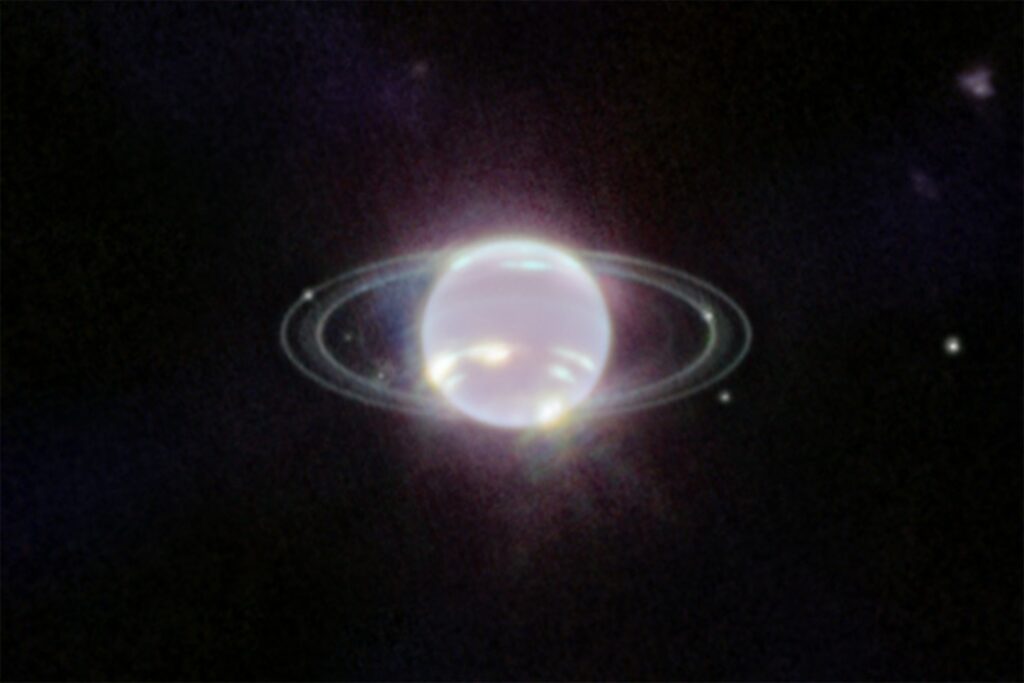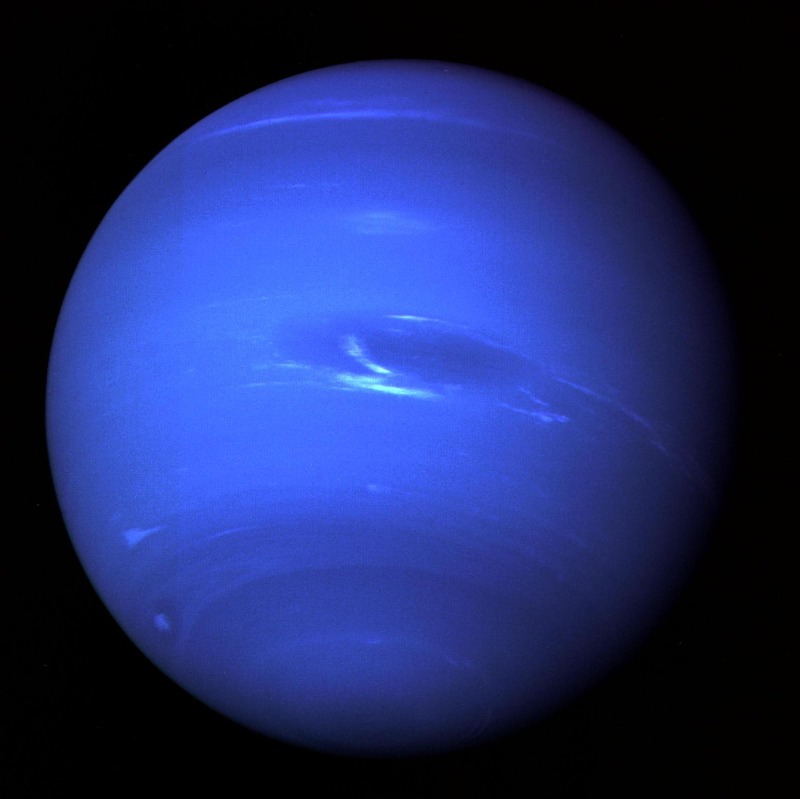Neptune is the eighth and farthest planet from the Sun in our solar system, and one the least explored. This is primarily due to its great distance from Earth and the challenges associated with sending spacecraft to study outer planets. Here are some key details about this planet:
Size and Distance from the Sun
Neptune has a diameter of approximately 49,244 kilometers (30,598 miles), making it the fourth-largest planet in our solar system by diameter. The average distance between Neptune and the Sun is about 4.5 billion kilometers (2.8 billion miles), placing it in the outer regions of the solar system.
Atmosphere
Neptune is an ice giant composed primarily of hydrogen, helium, and icy materials such as water, ammonia, and methane. Its atmosphere contains a high concentration of methane, which gives Neptune its distinctive blue color.
Neptune’s atmosphere is characterized by dynamic weather patterns, including high-speed winds, massive storms, and dark spots similar to Jupiter’s Great Red Spot. The upper atmosphere of Neptune experiences winds that can reach speeds of up to 2,100 kilometers per hour (1,300 miles per hour), the fastest in the solar system.
Great Dark Spot
Neptune’s Great Dark Spot is a massive storm system similar to Jupiter’s Great Red Spot. It was first observed by the Voyager 2 spacecraft during its flyby of Neptune in 1989. However, subsequent observations by the Hubble Space Telescope in the late 1990s revealed that the Great Dark Spot had disappeared, suggesting that the planet’s atmosphere is highly dynamic and subject to rapid changes.

Axis and Orbital Period
Neptune’s axial tilt, or the angle of its rotational axis relative to its orbital plane, is approximately 28.32 degrees. This tilt is similar to Earth’s axial tilt, which is about 23.5 degrees.
The axial tilt causes it to experience seasons similar to those on Earth, albeit with much longer durations due to Neptune’s long orbital period. It takes about 165 Earth years to complete one orbit around the Sun, so each season on Neptune lasts for several decades.
Given Neptune’s 165-year orbital period, each season on Neptune would last for approximately 40 to 42 Earth years.
Rings and Moons
Neptune has a faint system of rings composed of dust and rocky debris, similar to those of Uranus but much less prominent.
It also has 14 known moons, with the largest moon being Triton. Triton is notable for its retrograde orbit, which is opposite to the direction of Neptune’s rotation, and its geologically active surface, with features such as geysers of nitrogen gas.

Exploration
Neptune has been visited by only one spacecraft to date: NASA’s Voyager 2 probe, which flew by the planet in 1989. Voyager 2 provided valuable data about it’s atmosphere, rings, and moons, but no further missions to the planet have been conducted since then.
Observation
Neptune is barely visible to the naked eye under dark sky conditions, but it appears as a faint, bluish dot due to its distance from Earth and its dimness compared to brighter stars and planets.
Observing Neptune through a telescope allows for better views of its bluish color and potentially some details of its atmosphere, although its small size and distance make it challenging to observe in detail.
It requires patience and persistence, especially due to its faint appearance in the sky. Be prepared to spend some time searching for it, and don’t be discouraged if you don’t see it right away. If possible, plan multiple observing sessions over several nights around the time of opposition to increase your chances of spotting it.
With binoculars or a telescope, you may be able to see Neptune as a small, bluish disk rather than just a point of light.



